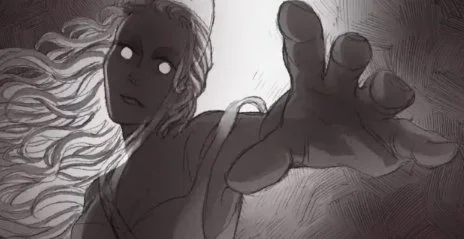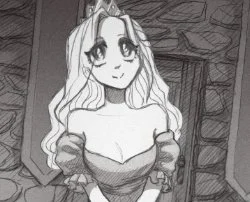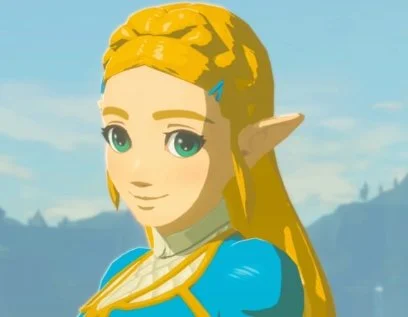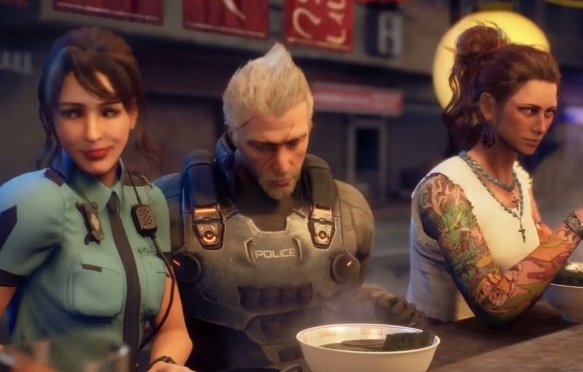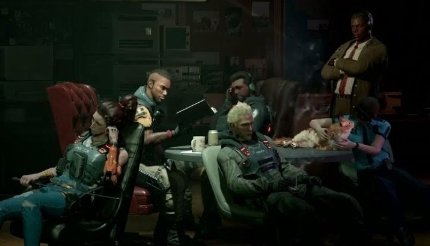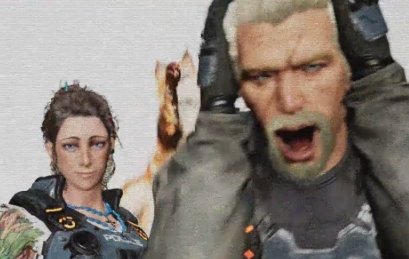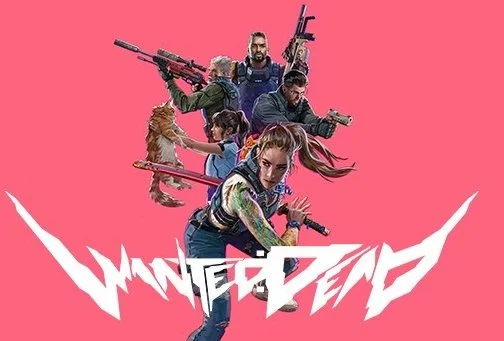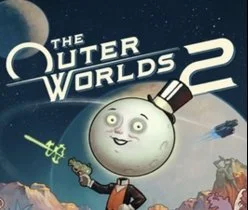The Evolution of Princess Zelda: From Damsel to Architect
Princess Zelda has always had a difficult job. She is the woman in the title of one of gaming’s most famous series, yet for much of The Legend of Zelda’s history she has not been the one you actually play. Instead she has hovered over the narrative as destination, prize or symbol – the classic damsel in distress. Over nearly four decades, however, the way Nintendo writes Zelda has shifted markedly. Her journey mirrors wider changes in games culture: from simple rescue fantasy to more complex, sometimes awkward, experiments in female agency.
This essay traces Zelda’s evolution with a particular focus on the damsel in distress trope. Has the series truly left that pattern behind, or merely dressed it up in more sophisticated narrative clothes?
What do we mean by “damsel in distress”?
In media studies, the damsel in distress is a narrative pattern in which a (usually) female character is placed in peril, removing her from meaningful action so that a (usually male) hero can rescue her. She functions primarily as motivation and reward rather than as a subject with her own goals. Scholars writing on games emphasise how common this is, particularly in Japanese and Western titles from the 1980s–2000s.
Princess Zelda has been one of the archetypal examples. Multiple academic theses explicitly use her as a case study when discussing the trope and its impact on players’ expectations around gender.
With that in mind, we can look at the series in rough “eras”, asking the same questions of each:
What is Zelda allowed to do?
How is her role framed relative to Link?
And crucially, does the plot still revolve around rescuing her?
The 8- and 16-bit years: Zelda as goal, not character
The Legend of Zelda (1986) and Zelda II (1987)
In the original The Legend of Zelda, Zelda doesn’t really appear until the end. She is kidnapped off-screen by Ganon; her Triforce is shattered, and Link must rescue both princess and kingdom. The manuals and marketing material describe her almost entirely in relational terms – “Princess Zelda of Hyrule”, “held in Ganon’s clutches” – and the game’s core loop is “explore dungeon, become stronger, save the princess”.
Zelda II: The Adventure of Link technically tweaks this setup: Zelda is in a magical sleep rather than kidnapped, but she is once again an inert female body driving the plot. She appears lying on a pedestal in the North Castle; Link’s entire quest is to awaken her. She has no lines, no agency, and no visible inner life.
In both games, then, Zelda is a textbook damsel: passive, idealised, and symbolic. She does not fight, travel, or make decisions in front of the player. This matches the broader use of the trope in 1980s gaming, where rescuing a princess, girlfriend or daughter was an easy, culturally legible way of motivating action.
A Link to the Past (1991) and the early 90s
With The Legend of Zelda: A Link to the Past, we start to see a slight complication. Zelda telepathically contacts Link at the start, guiding him to escape the castle and giving him information. She then spends much of the game imprisoned or magically sealed away. Mechanically she remains an object to be rescued, but narratively she is more vocal and visibly aligned with resistance against Agahnim and Ganon.
Scholars who track the character across multiple titles argue that ALttP is the beginning of a slow, uneven shift: Zelda moves from “silent prize” to “symbolic leader who occasionally speaks”, though still locked within a damsel framework.
Ocarina of Time and the double life of Sheik
The Sheik twist
The real turning point – culturally, if not mechanically – is The Legend of Zelda: Ocarina of Time (1998). Early on, young Zelda is again a child-royal who needs protection. But when Link awakens seven years later, she has been working in disguise as Sheik, presenting as a male or androgynous Sheikah warrior. Sheik gives Link crucial information, teaches warp songs, and appears at key moments.
Only near the end is Sheik revealed to have been Zelda all along. In that instant, the game re-writes our memory: Zelda has not only been rescued; she has been active within the narrative, albeit behind a mask.
Gender scholars point to this as a famous instance of “performative” gender in games – Zelda’s power and freedom are tied to her passing as male, raising questions about how femininity is treated as inherently vulnerable. At the same time, the plot quickly re-damsels her: once she reveals her true identity, Ganondorf traps her in a barrier, and Link must fight to free her.
So Ocarina both challenges and reinforces the trope. Zelda is revealed as capable, clever and brave, but the climax still needs her to be abducted so that Link has something to save.
Experiments in agency: Tetra, Midna and Spirit Tracks Zelda
From the early 2000s onward, the series experiments more overtly with female agency – often by splitting “princess” into multiple characters or hybrid forms.
Tetra in The Wind Waker (2002)
In The Wind Waker, we meet Tetra, a savvy pirate captain who is confident, sarcastic and often more competent than Link. Tetra leads her crew, participates in combat encounters, and makes decisions that drive the narrative. Players and critics alike celebrated her as a welcome contrast to the archetypal passive princess.
The catch, of course, is that Tetra is Zelda – she just does not know it yet. Once her royal identity is revealed, Tetra is quickly placed in the traditional royal dress, literally lightened in colour palette, and removed from action to be sealed in Hyrule Castle for her own safety. The game makes this tension explicit: the King of Red Lions insists she must stay hidden; Tetra chafes against the constraint.
Analyses of the game often read this as a commentary on how femininity and royalty are coded as incompatible with adventure. The moment Tetra becomes “Princess Zelda”, she becomes an object again.
Twilight Princess (2006): Dignified but sidelined
The Legend of Zelda: Twilight Princess presents one of the most regal, serious Zeldas. She rules a conquered Hyrule and chooses to surrender to Zant to protect her people, later sacrificing her life-force to save Midna. Her design and dialogue emphasise wisdom, restraint and responsibility.
However, most of the game’s emotional weight is carried by Midna, the impish Twilight Princess who travels with Link. Zelda is crucial but largely off-stage – again more symbol than agent in the moment-to-moment adventure. Scholars often note that giving the active companion role to Midna sidesteps the issue rather than truly transforming Zelda’s position.
Spirit Tracks (2009): A literal co-pilot
The DS title The Legend of Zelda: Spirit Tracks is often cited as a major – if underplayed – advance. Early in the game, Zelda is struck down and her spirit separated from her body. Crucially, this does not bench her. As a ghost, she becomes Link’s constant companion, and the player literally controls her when possessing hulking Phantom armours to solve puzzles and fight enemies.
Producer Eiji Aonuma has said the team wanted Zelda to have “a more clearly defined role” and that giving her the ability to possess Phantoms was a deliberate way to involve her in core gameplay. Some commentators argue that Spirit Tracks “finally gave the princess a crucial role to play”, positioning her as co-hero rather than quest object.
Yet even here, the damsel logic hasn’t fully gone away: rescuing Zelda’s stolen body and reuniting soul and flesh remains a central goal. She is both helper and “thing to be restored”.
Skyward Sword and the mythic destiny
The Legend of Zelda: Skyward Sword (2011) again reimagines Zelda, this time as Link’s childhood friend and an energetic, grounded young woman. She is spirited away by dark forces early on, but the narrative gradually reveals that she is the mortal incarnation of the goddess Hylia. The player spends most of the game chasing her across the surface world, arriving just after she has moved on to fulfil her own role.
This structure superficially resembles a traditional rescue plot, but the game repeatedly undercuts the idea that Zelda is simply a victim. She is actively moving towards her sacrificial destiny, choosing to put herself into centuries-long sleep to sustain the power needed to seal Demise. Link, meanwhile, is often catching up rather than leading.
Some feminist readings highlight this as a shift from “damsel” to “co-protagonist whose story intersects with, but isn’t reducible to, the hero’s”. Others point out that her ultimate act is still one of self-sacrifice, in line with a broader pattern where female power in the series is frequently tied to martyrdom.
Breath of the Wild: trapped, but not simple
When The Legend of Zelda: Breath of the Wild released in 2017, it was quickly framed in popular discourse as a step backwards. Anita Sarkeesian’s “Tropes vs Women in Video Games” project, for instance, critiqued the game for once again casting Zelda as a damsel held in stasis in Hyrule Castle while the male hero saves her. Some commentators argued that, for all the open-world innovation, the gender narrative had “reverted” to her earliest incarnation.
The reality is more complicated. Zelda is, mechanically, an off-screen objective. But the game embeds an extensive optional narrative in the form of memories and logs detailing her scientific fieldwork on the Guardians and Divine Beasts, her strained relationship with her father, and her intense frustration at failing to awaken her sealing power. Players who seek these out discover a character with a clear arc: from dutiful but resentful princess to exhausted, traumatised survivor who holds Calamity Ganon at bay for a century through sheer will.
Several essays argue that this makes Breath of the Wild’s Zelda “not a damsel” in the classical sense: she is not kidnapped for leverage, but chooses to contain Ganon at enormous personal cost. However, because these developments are mostly presented in flashback, the present-tense structure of the game still casts her as the distant woman in need of rescue. Both readings can be true at once: she is psychologically rich and functionally damselled.
Crucially, Breath of the Wild is also the point at which public pressure for a playable Zelda really intensifies. Fans and journalists alike ask why, when Hyrule is so open and systemic, Zelda herself is still locked in a non-playable role.
Tears of the Kingdom: sacrifice, dragonhood and absence
The Legend of Zelda: Tears of the Kingdom (2023) doubles down on some of Breath of the Wild’s themes while introducing new tensions. Zelda briefly appears alongside Link in the opening sequence, investigating ancient ruins as an apparent equal, only to be flung into the distant past and removed from the overworld adventure. Much of the game involves Link piecing together her fate through “Dragon’s Tears” memories scattered across Hyrule.
These reveal that Zelda worked with the ancient king Rauru and queen Sonia, learned about the Imprisoning War, and ultimately chose to swallow a secret stone, permanently transforming herself into the Light Dragon in order to restore the Master Sword and ensure the Demon King can one day be defeated.
On paper, this is radical: Zelda is the one who makes the world-saving, irreversible sacrifice; Link’s role is to complete the plan she set in motion. Some critics and fans praise Tears of the Kingdom for presenting “the best Zelda in the series” in terms of maturity and thematic weight.
Yet others argue that the game still sidelines her by turning her into a mute, non-human creature for most of its runtime, leaving Link centre-stage in the playable present. As with Breath of the Wild, we are invited to admire Zelda’s agency retrospectively, through cut-scenes and lore, while our actual hands-on experience remains with the silent male hero.
Outside the mainline: Hyrule Warriors and Echoes of Wisdom
Parallel titles and spin-offs complicate this picture further.
The Hyrule Warriors games and the fighting series Super Smash Bros. feature Zelda as an active combatant, wielding magic, bows, and light-based attacks. These appearances are non-canonical to the main timeline but matter culturally: they normalise the idea of Zelda as a fighter, not just a figure to be protected.
More strikingly, Nintendo announced and then released The Legend of Zelda: Echoes of Wisdom (2024), the first mainline-style top-down Zelda game in which Zelda is the primary playable protagonist rather than Link. Trailers and coverage emphasise her “wisdom”-driven toolset – a wand that copies objects and enemies to solve puzzles – explicitly positioning her intelligence and creativity as the core gameplay fantasy.
Commentators have read Echoes of Wisdom as the culmination of decades of cultural and commercial shifts: a recognition that players, including a growing female audience, are ready – and have long been ready – to see the titular princess take centre-stage.
Has the damsel trope actually changed?
Looking back over nearly forty years of releases, a few patterns emerge.
1. From object to subject (but often off-screen)
Early Zeldas reduce the princess almost entirely to a narrative object. Over time, she gains a backstory, personality, and inner conflict. Ocarina, Skyward Sword, Breath of the Wild and Tears of the Kingdom all invest heavily in Zelda’s motivations and emotions. Academic work tracking her portrayal across ten core games concludes that she has undergone a “gradual change from a two-dimensional damsel in distress to a more dynamic character”, reflecting wider cultural shifts in attitudes towards women in games.
However, that subjectivity is frequently displaced into flashbacks, parallel timelines or hidden lore. The playable “now” of the series overwhelmingly belongs to Link.
2. Agency often arrives in disguise or at a cost
When Zelda is allowed to act freely, it is often through disguise (Sheik, Tetra), incorporeal forms (Spirit Tracks’ ghost, the Light Dragon), or sacrificial roles (Skyward Sword’s goddess-incarnation, Tears of the Kingdom’s dragonhood). These transformations grant her power but also remove her from ordinary social and physical space.
Some feminist critics argue that this pattern implicitly suggests that “ordinary” femininity is incompatible with agency – Zelda must either pass as male, cease to be human, or exit the scene in order to be powerful. Echoes of Wisdom, with its human, royal, playable Zelda solving problems through intellect, may mark an important break from that tendency.
3. The damsel structure persists in game design, if not in character writing
Even in the more progressive entries, the overarching structure is often still: Zelda is elsewhere, Link must reach her. Skyward Sword, Breath of the Wild, and Tears of the Kingdom embed much richer context into that journey, but the “save the princess / restore the princess” spine remains remarkably durable. Scholars who studied players’ responses to damsel narratives point out that this structure has powerful emotional pull – it’s simple, archetypal, and easy to translate into quest design – which may explain why it persists.
What has changed more dramatically is how the series contextualises that structure: Zelda is no longer just a narrative MacGuffin but often the architect, catalyst, or co-author of the plan that will save Hyrule.
4. Player expectations now matter
Finally, the debate around Zelda’s role has become part of the series’ own meta-narrative. Essays, theses and thinkpieces routinely critique Nintendo’s reluctance to make her a main playable hero, while fan campaigns and speculative articles argue for “a playable Zelda era”. Nintendo’s eventual decision to front her in Echoes of Wisdom – and to keep expanding her playable roles in spin-offs – suggests that audience pressure, and the changing demographics of players, have helped push the character beyond her damsel origins.
Simply Put: From princess in peril to partner in legend?
So has the damsel in distress trope truly changed in The Legend of Zelda, or just been cleverly re-dressed?
The honest answer is: both.
On one hand, Zelda today is a far cry from the motionless sleeping beauty of Zelda II. Contemporary incarnations are scientists, pirates, monarchs and time-travelled sages who argue with fathers, make catastrophic decisions, and shoulder world-altering burdens. Scholars who look across the series see a clear trajectory towards greater complexity and agency.
On the other hand, the ludic structure of most mainline games still casts her as the person you are moving towards, protecting, or restoring, rather than the person you are. The damsel framework has been stretched, subverted and problematised, but not fully abandoned.
Echoes of Wisdom – and the growing constellation of playable Zeldas in spin-offs and prequels – may represent the beginning of a new phase in which “save the princess” is no longer the default end-state of Hyrulean adventures. Whether that becomes the norm, or remains a fascinating exception, will tell us a lot about how deeply the series is willing to interrogate its own foundational fairy tale.
For now, Zelda sits in an intriguing liminal space: no longer just a damsel in distress, not yet consistently the hero of her own legend, but increasingly something messier and more human in between. And in that in-between space – full of disguises, sacrifices, frustrations and flashes of brilliance – she has become one of gaming’s most enduring mirrors for our evolving ideas about women, power and play.
References
Aonuma on how Zelda became a playable character in Spirit Tracks
IN THE GAME OF PATRIARCHY: THE DAMSEL IN DISTRESS NARRATIVE IN VIDEO GAMES
"Why Can't Zelda Save Herself? How the Damsel in Distress Trope Affects" by Jared Capener Hansen
The Legend of Zelda and the Portrayal of Women in Gaming History
Breath Of The Wild’s Zelda Isn’t A Damsel (Spoilers) | by Luci Turner | Medium
How Breath of the Wild Failed Princess Zelda and Representation – New Normative
Playing as the Princess: Nintendo, Gender Roles, and Echoes of Wisdom – Just Tech







